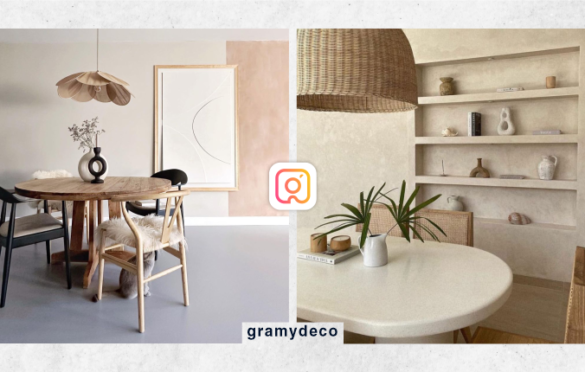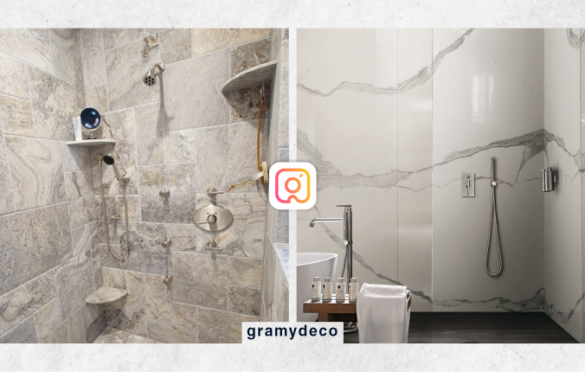The importance and popularity of minimalism in contemporary design cannot be overstated. Minimalism has become a prominent movement that focuses on simplicity, functionality, and clean aesthetics. It is highly valued for its ability to create a sense of calm and clarity in an increasingly chaotic world. Additionally, minimalistic designs often prioritize sustainability and efficiency, making them highly relevant in today’s environmentally conscious society.
Well, in minimalism itself, there are, different kinds of minimalism that offer different ways of understanding and designing things. Includes Scandinavian minimalism, which focuses on clean lines and neutral colors; Japanese minimalism, which emphasizes simplicity and natural materials; and industrial minimalism, which incorporates raw materials and exposed elements. Other styles include minimalist bohemian, which combines minimalism with eclectic and artistic elements, and modern minimalist, which embraces sleek and streamlined designs. Here, we will give you a brief overview of some popular types of minimalism in interior design, talking about their main features and the atmosphere they create. So, keep reading this article.
Scandinavian Minimalism
First, Scandinavian minimalism is a design philosophy that emphasizes simplicity, functionality, and clean lines. It originated in the mid-20th century as a response to the ornate and extravagant design styles of the time in the Nordic countries of Denmark, Sweden, Norway, Finland, and Iceland. Scandinavian minimalism is known for its use of natural materials such as wood and leather, neutral color palettes, and a focus on creating a sense of calm and tranquility in the living space.
-
Use of natural materials

Wood materials for furniture and flooring from @alltagsschaetze
This includes wood, stone, and leather. These materials are often left in their natural state, showcasing their inherent beauty and texture. It can be done through furniture and flooring. Additionally, the use of these natural materials helps create a sense of warmth and connection to nature within the minimalist design aesthetic.
-
Neutral color palettes and clean lines

White color schemes and open space concepts from @minimalistics.designs
Neutral color palettes and clean lines are characterized by their simplicity and understated elegance. These palettes often feature shades of white, gray, and beige, creating a calm and serene atmosphere. These neutral colors allow the focus to be on the clean lines and functional design elements that are hallmarks of Scandinavian minimalism.
-
Simplicity

Minimalist and uncluttered Scandinavian kitchen from @homestory_pictures
It embraces the idea of “less is more” and seeks to create spaces that are both visually appealing and highly functional. This approach often incorporates neutral color palettes, open floor plans, and an emphasis on natural light.
-
Functionality
This design approach prioritizes practicality and efficiency, with a focus on creating functional spaces that are free from unnecessary clutter. The use of natural materials and neutral color palettes further enhances the functionality of Scandinavian minimalism, allowing for a calm and serene atmosphere.

Scandinavian bedroom with a simple and functional small cabinet from @third_floor_left
Japanese Minimalism
Japanese minimalism is heavily influenced by Zen Buddhism, which emphasizes simplicity, mindfulness, functionality, and the elimination of unnecessary elements. It is characterized by clean lines, open spaces, and a harmonious balance between form and function. The principles of wabi-sabi, an aesthetic concept centered around imperfection and impermanence, also play a significant role in Japanese minimalism. These influences and principles guide the design and lifestyle choices of adherents, promoting a sense of tranquility, harmony, and appreciation for the beauty found in simplicity. So, it can be said that Japanese minimalism is deeply rooted in Japanese culture.
-
Emphasis on simplicity and harmony with nature
This is reflected in every aspect of the design philosophy. Japanese minimalism focuses on creating a sense of tranquility and balance by eliminating unnecessary clutter and embracing clean lines. The use of natural materials such as wood and stone further enhances the connection to nature, allowing for a seamless integration of indoor and outdoor spaces.

This apartment design applies wabi-sabi design. It emphasizes simplicity and harmony with nature. It celebrates the beauty of imperfections, embracing the idea that nothing is perfect or permanent. This design philosophy encourages a deep appreciation for the natural world and seeks to create spaces that evoke a sense of tranquility and mindfulness. By incorporating organic materials, muted colors, and uncluttered spaces, wabi-sabi design invites us to find beauty in the simple and ordinary aspects of life. Wabi-sabi designs from @chloecleroux
-
Use of traditional elements
Japanese minimalism is characterized by its use of traditional elements, which are seamlessly integrated into the overall design. These elements include natural materials such as wood and stone, as well as traditional Japanese craftsmanship techniques like shoji screens and tatami mats. The incorporation of these traditional elements adds a sense of warmth and authenticity to minimalist spaces, creating a harmonious balance between simplicity and cultural heritage. Additionally, the use of traditional elements in Japanese minimalism also emphasizes the importance of nature and mindfulness.

Shoji screen is a traditional element that is commonly used in Japanese minimalism. It is a versatile and functional piece of furniture that serves as both a room divider and a decorative element. The Shoji screen is known for its simplicity, clean lines, and use of natural materials such as rice paper and wood. It adds a sense of tranquility and serenity to any space, while also allowing for flexibility in terms of privacy and openness. Shoji screen from @do.pe.design
Industrial Minimalism
Industrial minimalism is a contemporary design style that combines the raw, unfinished elements of industrial architecture with the simplicity and clean lines of minimalism. It emerged as a response to the fast-paced, cluttered nature of modern life, offering a serene and uncluttered aesthetic. This style often incorporates exposed brick walls, concrete floors, and metal accents to create a sleek and utilitarian look. By embracing simplicity and functionality, industrial minimalism creates a harmonious balance between form and function in interior design.
-
Incorporate open spaces
This style often incorporates open spaces and exposed structural elements to create a modern and sleek aesthetic. Additionally, industrial minimalism prioritizes the use of natural light and minimalistic furniture to create a sense of spaciousness and simplicity in the overall design.

The open space concept with a large window creates a sense of spaciousness and allows natural light to flood the room, enhancing the overall aesthetic of industrial minimalism. The open layout also promotes a clean and uncluttered environment, further emphasizing the simplicity and functionality that are characteristic of this design style. Open spaces and large windows from @la_grange_du_vignoble
-
Utilization of raw and unfinished materials
By using raw materials such as concrete, metal, and exposed brick, industrial minimalism embraces the beauty of imperfections and celebrates the authenticity of these materials. Additionally, this design style promotes sustainability by repurposing existing materials and reducing waste in the manufacturing process.

The unfinished concrete ceiling and floor, along with the exposed bricks, create a sense of authenticity and ruggedness. To complement this aesthetic, metal furniture combined with leather material is often used, adding a touch of sleekness and modernity to the overall design. The combination of these elements creates a unique and minimalist atmosphere that celebrates simplicity and functionality. Raw and unfinished decor from @industrialkonzept
-
Incorporation of exposed pipes, beams, and ductwork
It adds an edgy and raw aesthetic to the overall design. The intentional display of these elements showcases the functionality and structural integrity of the space, creating a sense of authenticity and honesty. Additionally, the use of neutral color palettes and clean lines further enhances the industrial minimalistic style, allowing these exposed features to become focal points that contribute to the overall visual appeal.

This industrial apartment design approach embraces the inherent beauty of functional elements, highlighting their simplicity and functionality. The exposed ventilation pipes and bricks serve as visual focal points, adding character and texture to the space while maintaining an uncluttered and streamlined look. Ventilation pipes and exposed bricks from @rachelgerdes
Bohemian Minimalism
Bohemian minimalism is a design style that combines the simplicity of minimalism with the eclectic and artistic elements of bohemian decor. It embraces a pared-down aesthetic while incorporating unique textures, patterns, and colors inspired by different cultures and eras. This fusion creates a harmonious balance between clean lines and free-spirited expression, resulting in a space that feels both serene and creatively inspiring.
-
The use of vibrant colors and patterns
Using vibrant colors and patterns can create a unique and eclectic aesthetic that is both visually striking and harmoniously balanced. This design style embraces simplicity while infusing spaces with a sense of warmth and individuality, making it a popular choice for those seeking a relaxed yet vibrant atmosphere in their homes or personal spaces. For example, you can incorporate bold, eclectic prints on accent pillows or rugs to add a pop of color to a neutral space. Additionally, using vibrant hues in artwork or statement furniture pieces can create a visually stimulating focal point in a bohemian minimalist design.

Mixing colors and patterns in neutral bedroom decor from @bohotribe
-
Incorporation of plants and natural
The incorporation of plants and natural elements is a key aspect of bohemian minimalism. By bringing in lush greenery and organic textures, this design style creates a harmonious balance between simplicity and nature. The use of potted plants, hanging planters, or even a living wall can add a touch of life and vibrancy to the clean lines and neutral color palette typically associated with bohemian minimalism. Additionally, natural materials such as wood, rattan, or jute can also be another addition to the natural elements. in bohemian minimalism.

This bohemian bedroom decor can create a serene and earthy atmosphere. The combination of the lush greenery from the indoor plant and the natural texture of the jute rug adds a touch of warmth and coziness to the overall bohemian minimalistic aesthetic. Indoor plants and jute rug from @interior_boho
Conclusion
Exploring the different styles of minimalism in interior design allows individuals to create spaces that are both visually appealing and functional. Whether it’s Scandinavian minimalism with its clean lines and neutral color palette, or Japanese minimalism with its focus on simplicity and natural materials, there is a style of minimalism that can suit any individual’s taste and lifestyle. By embracing minimalism, individuals can achieve a sense of calm and tranquility in their living spaces while also expressing their unique personal style.












